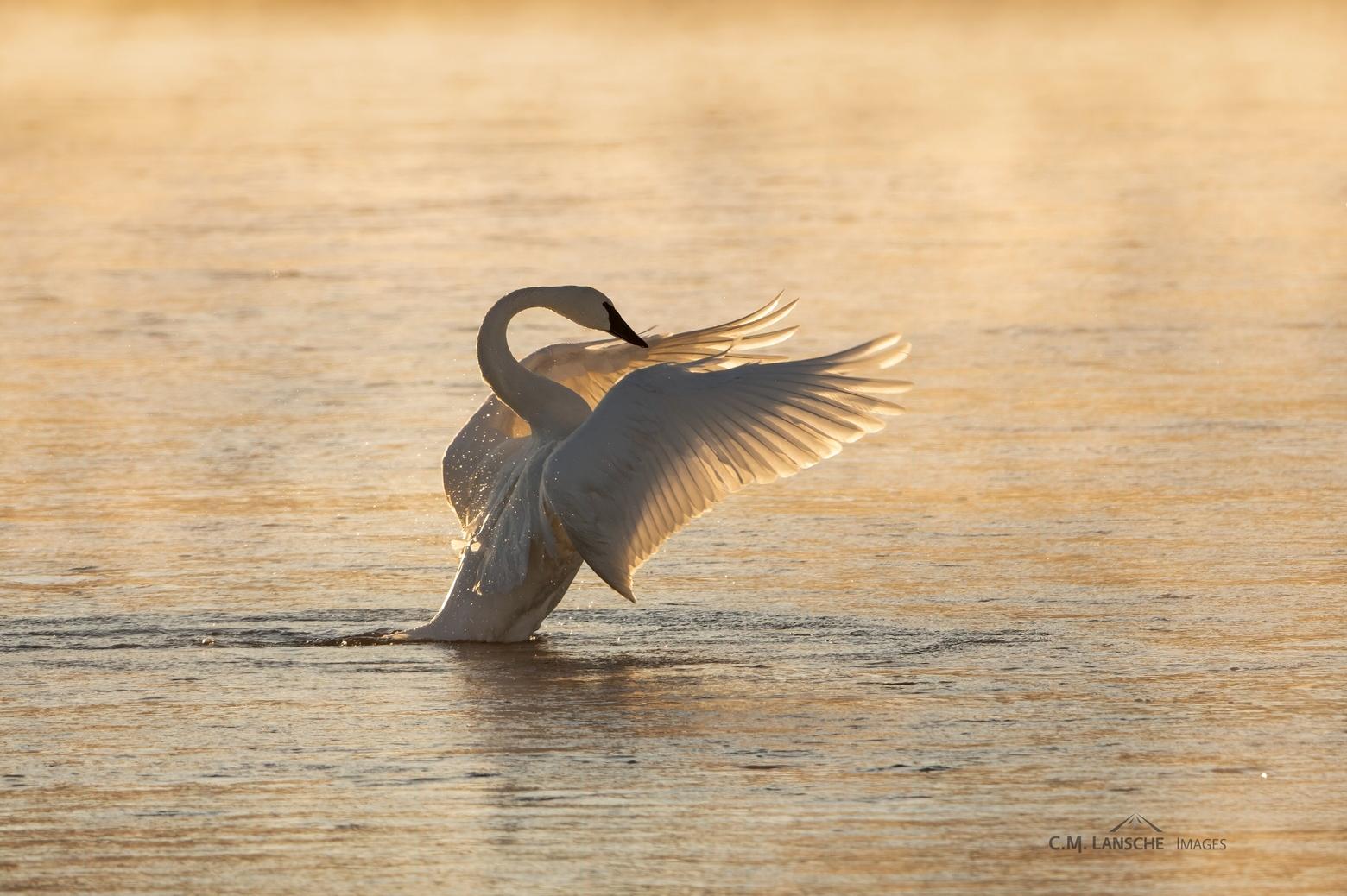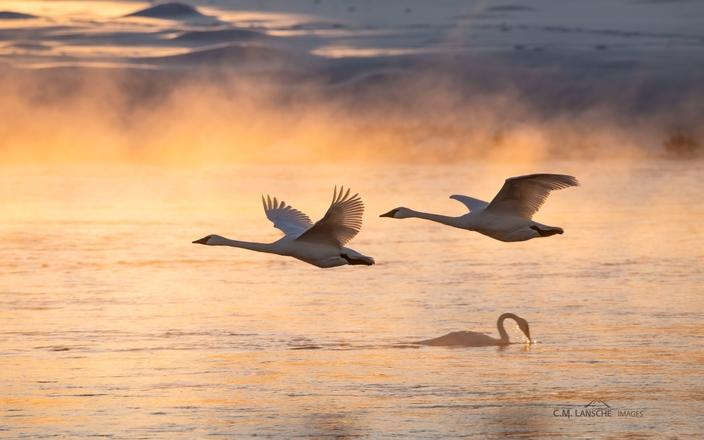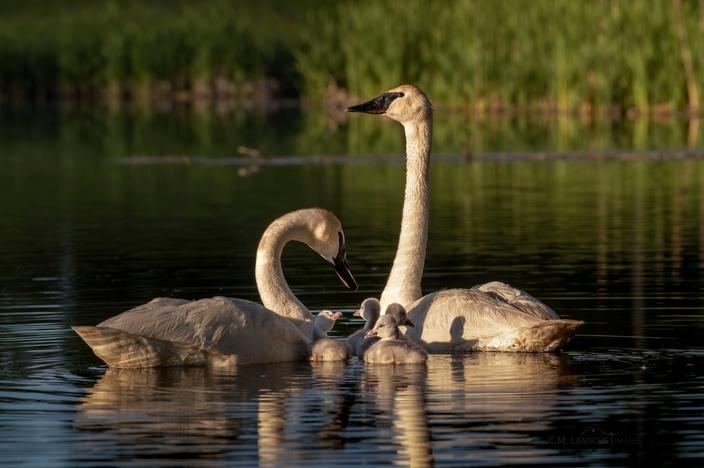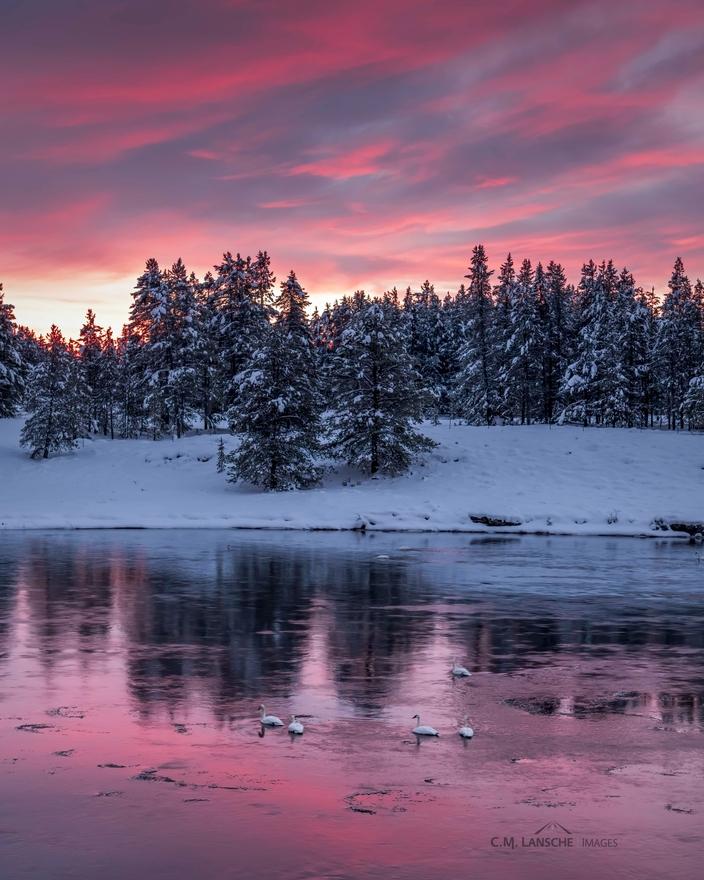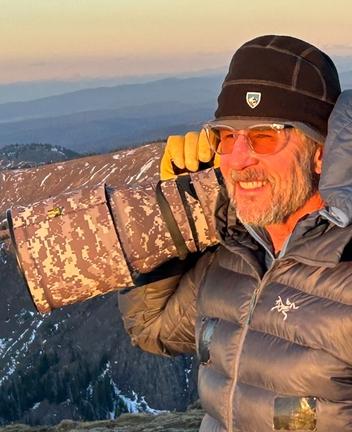Back to StoriesThe Arrival of Harriman’s Iconic Trumpeter Swans
November 22, 2023
The Arrival of Harriman’s Iconic Trumpeter Swans In this guest essay, Charlie Lansche writes about the great trumpeter swan and its presence in Harriman
Essay and photos by Charlie Lansche
It was the nasally honks emanating
from a small flight of trumpeter swans that caught my attention as they sliced
through gray mist rising from the river before touching down in slow-moving
water 100 yards from where I stood.
I continued my trek along
the banks of the Henry’s Fork in Harriman Ranch State Park during this crisp morning
in early November and was soon greeted by a second flight of swans descending
upon these open, spring-fed waters. Sleek white bodies paired with
four-foot-long wings created ghostly forms in the fog before their dark palmated
feet skimmed the surface of the river as they landed.
Then another group approached
followed by yet another. Before long, an uninhabited and peaceful stretch of
river was speckled with more than 100 glistening white trumpeter swans. The chill
air crackled with primordial cries and guttural trumpets reminiscent of an
orchestra warming up before the big performance.
To my astonishment, I had
witnessed the tip of the spear toward the end of an age-old fall migration for hundreds
of trumpeters that had finally reached the southern fringe of their winter
habitat. These elegant birds had spent the summer nesting and raising small
broods of cygnets to sub-adulthood in the vast wetlands of Canada and Alaska.
Once abundant and
widespread throughout North America, by the early 1900’s the trumpeter swan was
nearly extinct. Thanks to hunting restrictions and the conservation efforts of
organizations including the Trumpeter Swan Society, Wyoming Wetlands Society, and
the Teton Valley Land Trust’s Trumpeter Swan Program, swan populations have
significantly recovered—yet threats remain.
Trumpeter
swans live and breed in wetlands, ponds and slow rivers. They require
year-round access to open water that provides the aquatic plants trumpeters require
as a primary food source. The loss of suitable habitat to increased residential
and agricultural development, a diminishing water supply, and climate change are
factors that will continue to affect swan recovery.
While they
winter, Trumpeter Swans are abundant in Harriman Ranch from November into March
and April, and a much smaller summer population nests here in the shallow open
lakes and waters of the ranch and surrounding areas. An even smaller population
are successful breeders. In fact, Idaho has only about 20 nesting pairs of
swans. Over the past 40 years, protected habitat in and adjacent to Harriman
Ranch State Park has produced more cygnets than any other region in Idaho.
Harriman remains one of
the finest locations in the Lower 48 to observe swans year round in their
natural habitat. This winter, when you’re cross-country skiing, snowshoeing or
fat-tire biking through Harriman’s superb network of trails, keep your eyes and
ears open for these elegant winter inhabitants and savor their return from the
brink of extinction.
A version of this essay
first appeared in Friends of Harriman State Park News. Charlie Lansche sits on the board of
Friends of Harriman.
_______________________________________________________________________________________________________________________________
Mountain Journal is the only nonprofit, public-interest journalism organization of its kind dedicated to covering the wildlife and wild lands of Greater Yellowstone. We take pride in our work, yet to keep bold, independent journalism free, we need your support. Please donate here. Thank you.
Related Stories
July 11, 2024
Counting Cougars
In this guest essay, photographer and Yellowstone guide MacNeil Lyons recounts the top 10 most thrilling mountain lion sightings he's experienced....
October 18, 2023
Yellowstone Grizzlies and the Controversy Over Food
Between human interaction and a changing climate, are grizzly bears getting
enough to eat?
January 21, 2025
Why ‘Yellowstone’ Became a Dirty Word to so Many Montanans
No one ever claimed the hit cowboy soap opera was aiming for realism. But for Montana locals, the show’s many day-to-day...

